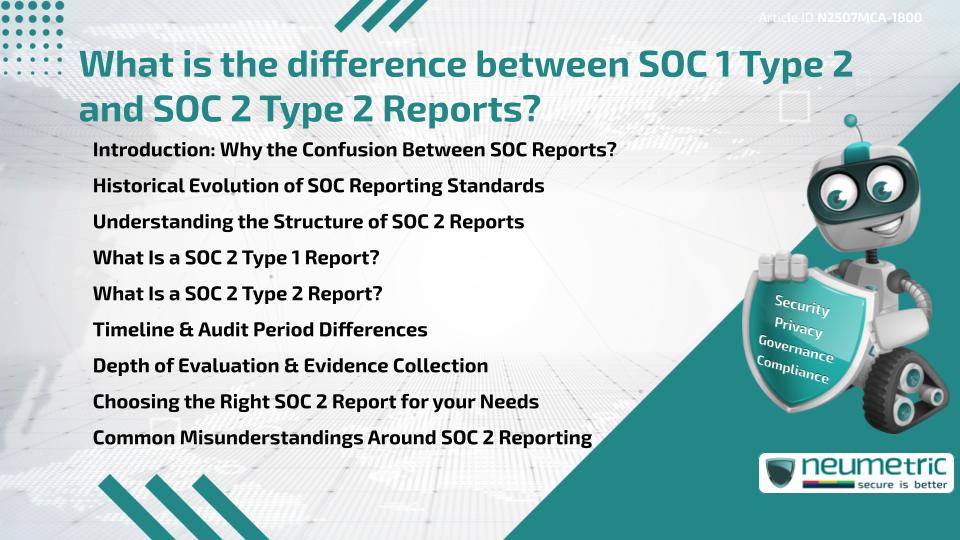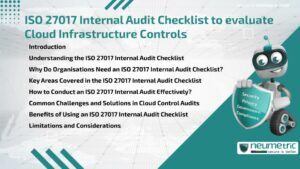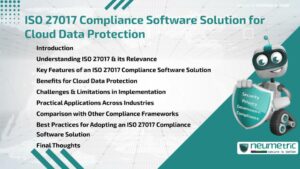Table of Contents
ToggleIntroduction: Why the Confusion Between SOC Reports?
Many Service Organisations find it hard to decide between the two (2) main SOC 2 Report Types. This confusion arises from a lack of understanding about the Difference between SOC 2 Type 1 and SOC 2 Type 2 Reports. Both aim to demonstrate Trust in Service delivery but differ in scope, timing & depth.
Historical Evolution of SOC Reporting Standards
SOC (Service Organisation Control) Reports were developed by the American Institute of Certified Public Accountants [AICPA]. They replaced older SAS 70 Audits to better align with evolving Technology & Risk landscapes. SOC 2 Reports specifically address Trust Criteria like Security, Availability & Privacy for Tech & SaaS Providers.
Understanding the Structure of SOC 2 Reports
Both SOC 2 Type 1 & Type 2 Reports are based on the same Trust Services Criteria. These include Control categories such as Logical Access, System Operations & Risk Mitigation. The Difference between SOC 2 Type 1 and SOC 2 Type 2 Reports lies in How & When Controls are reviewed.
What Is a SOC 2 Type 1 Report?
A SOC 2 Type 1 Report reviews the Design & implementation of Controls at a specific point in time. It answers the Question: Are the Controls in place & suitably Designed on this date? This Report is ideal for Early-stage Companies or those just beginning their Compliance journey.
What Is a SOC 2 Type 2 Report?
A SOC 2 Type 2 Report evaluates not only the Control Design but also their Operational effectiveness over a defined period, typically three (3) to twelve (12) months. It answers: Did the Controls work consistently throughout the review Window? This is often required by Enterprise Clients.
Timeline & Audit Period Differences
SOC 2 Type 1 Audits can be completed faster, often within a few Weeks. Type 2 Audits, by contrast, require Control evidence over months. Understanding the Difference between SOC 2 Type 1 and SOC 2 Type 2 Reports helps Companies align their Audit efforts with Customer expectations & readiness levels.
Depth of Evaluation & Evidence Collection
Type 1 Assessments involve Documentation Reviews & Walkthroughs. Type 2 goes further, requiring Log Files, Screenshots, Policy Adherence & Incident Reports. This depth is a major Difference between SOC 2 Type 1 and SOC 2 Type 2 Reports that affects Audit Complexity & Internal Resources.
Choosing the Right SOC 2 Report for your Needs
Early-stage Companies often begin with Type 1 to build credibility. Mature Companies with ongoing Client Contracts tend to need Type 2. Selecting the right Report depends on your Risk Profile, Sales Strategy & Contractual obligations.
Common Misunderstandings Around SOC 2 Reporting
Many believe Type 1 is “easier” and Type 2 is “better.” In reality, both serve different purposes. Type 1 gives a snapshot. Type 2 shows reliability over time. Recognising the Difference between SOC 2 Type 1 and SOC 2 Type 2 Reports ensures the right message is communicated to Customers & Stakeholders.
Conclusion
The Difference between SOC 2 Type 1 and SOC 2 Type 2 Reports lies in timing, Audit depth & Assurance level. Type 1 focuses on Control Design. Type 2 validates Control effectiveness. Both are valuable, depending on your Business maturity & Trust-building needs.
Takeaways
- Both Reports use the same Trust Services Criteria
- Type 1 Reports focus on Control Design at a point in time
- Type 2 Reports examine Control Performance over a period
- Type 1 is faster but less Comprehensive than Type 2
- Choosing between them depends on Client requirements & Business readiness
FAQ
What is the main Difference between SOC 2 Type 1 and SOC 2 Type 2 Reports?
Type 1 evaluates Controls at a point in time. Type 2 assesses if they operated effectively over a period.
How long is the Audit period for SOC 2 Type 2?
It typically ranges from three (3) to twelve (12) months depending on Audit Goals & Readiness.
Is a SOC 2 Type 1 Report enough for SaaS Companies?
For Early-stage SaaS, yes. But Clients often expect a Type 2 Report as proof of ongoing Security.
Do both SOC 2 Reports cover the same Trust Principles?
Yes. Both are based on Trust Services Criteria including Security, Confidentiality & Availability.
Can a Company do both SOC 2 Type 1 & Type 2?
Yes. Many Companies begin with Type 1 & progress to Type 2 after the Audit window matures.
References
- AICPA Guide to SOC Reports
- Trust Services Criteria Overview
- SOC 2 Explained by Cloud Security Alliance
- ISACA on Third Party Risk
- NIST Cybersecurity Framework
Need help?
Neumetric provides organisations the necessary help to achieve their Cybersecurity, Compliance, Governance, Privacy, Certifications & Pentesting goals.
Organisations & Businesses, specifically those which provide SaaS & AI Solutions, usually need a Cybersecurity Partner for meeting & maintaining the ongoing Security & Privacy needs & requirements of their Clients & Customers.
SOC 2, ISO 27001, ISO 42001, NIST, HIPAA, HECVAT, EU GDPR are some of the Frameworks that are served by Fusion – a centralised, automated, AI-enabled SaaS Solution created & managed by Neumetric.
Reach out to us!





